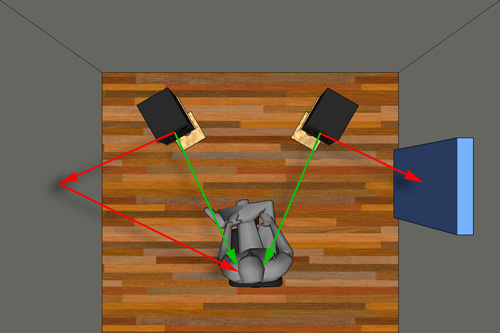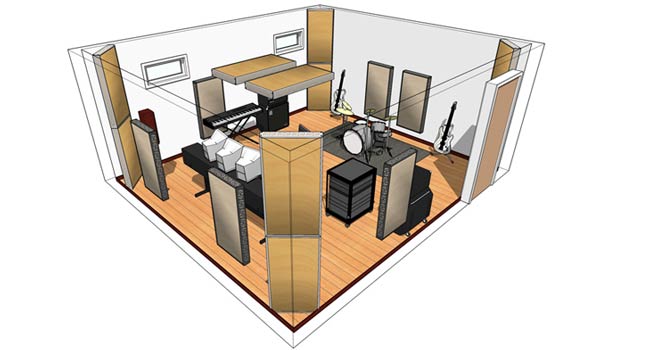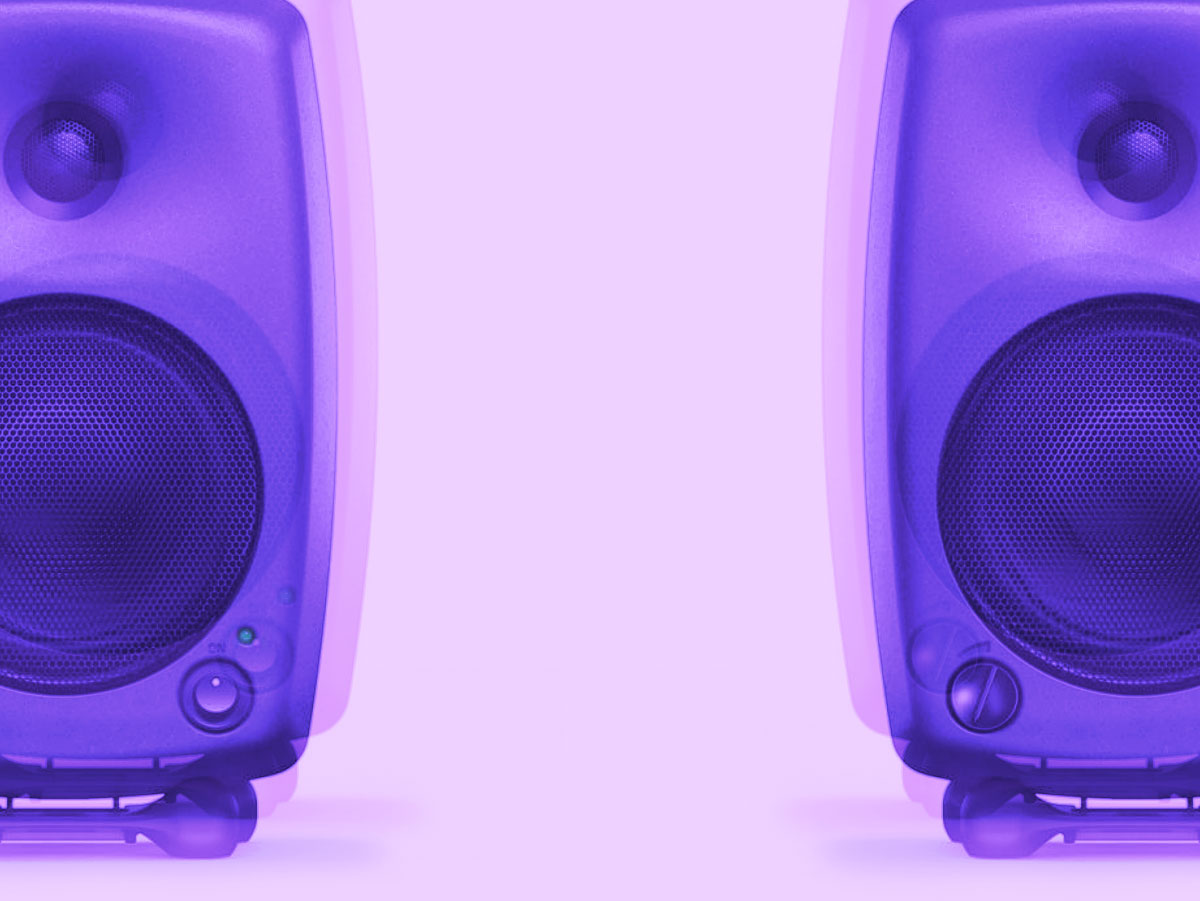- Published Nov 20, 2013 in In The Studio
Early reflections can mess up your stereo sound, make you hear things that aren't in the track and ruin a mix. Here's how to get rid of them.
The need for treating early reflection points is common in smaller rooms. "Early" reflections are sound waves that bounce off something like a wall or ceiling and arrive at your ears at almost precisely the same time as the direct sound coming from the sound source.
The standard treatment for early reflections is to place an absorber at the place where the sound is bouncing from to get to the listener.
How early reflections work.
The diagram below shows sound coming from a pair of speakers. The speakers each show two paths (shown as Green and Red arrows) that the sound wave will follow.

In the case of the left speaker, because the length of the path that goes directly to the listening position (the Green arrow) and the length of the reflected path that bounces off the wall (the red arrows) are similar, the two versions of the sounds will arrive at the listening position at almost exactly the same time causing an early reflection.
In the case of the right speaker, notice that the Red arrow stops at the absorption panel and does not go on to arrive at the listener.
When to treat early reflections.
Treating early reflection points will enhance clarity and yield a more precise and entertaining stereo image.
The treatment of near reflection boundaries is generally beneficial whenever the two paths traveled by the sound have a difference in length of less than twenty-two feet. When the path length difference is greater than twenty-two feet then the two sounds arrive at 20 milliseconds or more apart in time. When two sounds are at least this far apart in time, the brain interprets them as two distinct sounds.
Reflection points in front of the listener—on side walls and ceilings—are generally found to be the most important areas of concern for this type of acoustic treatment. Treating early reflection points will enhance clarity and yield a more precise and entertaining stereo image with sharply defined locational cues. Early reflection problems are a concern in the middle and high frequency ranges.

A typical small studio setup with acoustic panels and bass traps to prevent early reflections and produce a true stereo sound from the reference monitors.
Low-end in small rooms.
Smaller rooms typically need a significant amount of low frequency absorption. So if your room is approximately 5,000 cubic feet or smaller, you should use 4-inch bass trap panels for your treatment including early reflection control.
If your room is larger the 3,000 cubic feet and/or you already have enough bass traps but still need to treat for early reflections, your circumstances suggest you should consider the use less expensive 2" thick panels instead of broadband 4-inch bass traps for your early reflection treatment.

